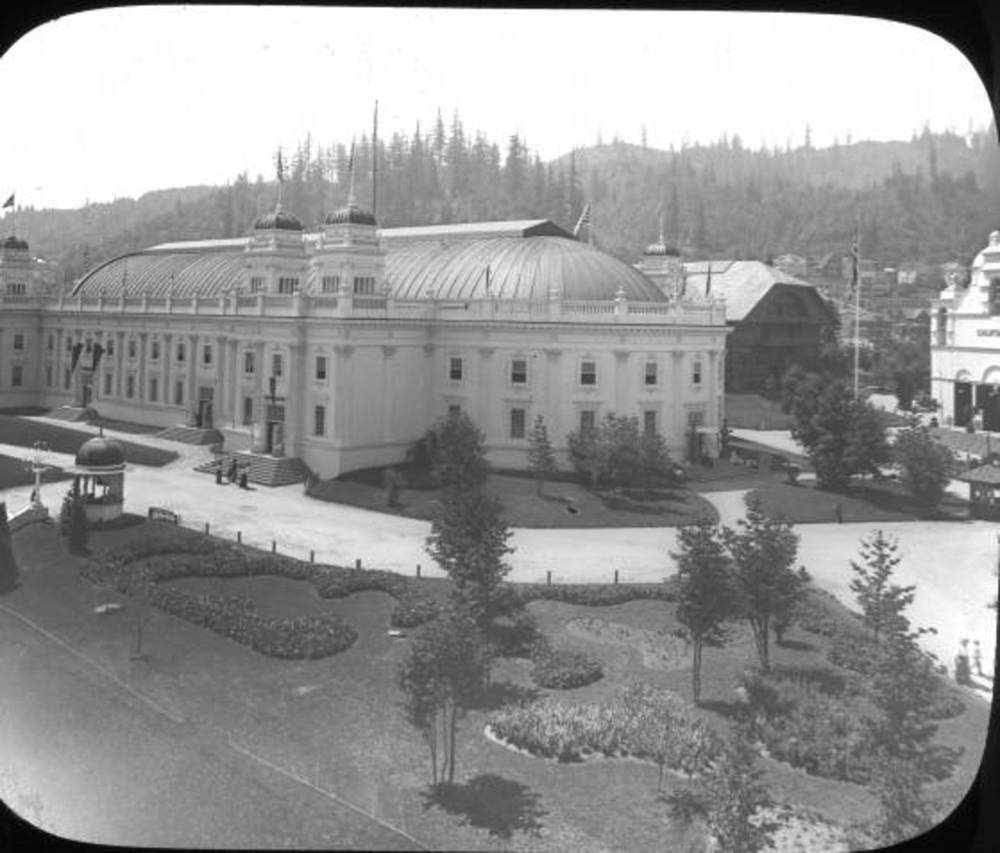The Oregon Nurses Association (ONA) serves as a professional organization of registered nurses and as a collective bargaining agent for its members. ONA is part of the national American Nurses Association (ANA); both groups were founded around the turn of the twentieth century.
ONA joined the ANA in 1911, but in 1906—even before Oregon's women citizens could vote—the group successfully lobbied the legislature for a Nurse Practice Act (NPA). This state legislation established a board that sets standards and administers licensure exams. Nurses who pass the test are legally "registered" and able to use the title "RN."
Nurses in Oregon were notably visible during the Lewis and Clark Exposition of 1905, staffing the fair’s first-aid station. Their presence accented a public-service role for the Oregon State Association of Trained Nurses, the forerunner of ONA, chartered in 1904 for the mutual benefit and support of members.“Trained” indicated members’ status as graduates of nurse “diploma schools,” usually affiliated with hospitals. Such institutions trained—rather than hired—students to perform laundering, bathing, bandaging, and feeding of patients. Before World War I, most RNs worked in home care, not in hospitals, as “private duty” nurses to individual families.
The Great Depression was a turning point for nursing. Oregon’s Elnora Thomson became ANA president (1930-1934) and helped move forward an agenda to modernize and professionalize the field. This meant expanding hospital employment for RNs and decisively moving nurse-training programs out of hospitals and into institutions of higher education. World War II accelerated both of these trends and complicated them. The ANA historically excluded “untrained” nurses, yet a new, large contingent of practical (non-RN) nurses was relied on to serve in the wartime crisis. After the war, the ranks of Licensed Practical Nurses grew and they founded their own associations.
Women of color were largely unwelcome in the white-dominated ANA, and African American women created the National Association of Colored Graduate Nurses (NACGN) in 1908 to meet their needs. Some Japanese American women, stigmatized and isolated by internment, left the camps for war-related nursing work (as did men for military service). After World War II, the NACGN disbanded to merge with ANA (1951), and collective bargaining became the focus of RNs' efforts to advance their professional and economic standing.
In 1961, the ONA scored a major victory with the passage of HB 1360, a collective-bargaining bill for nurses. The organization signed its first negotiated contract in October 1962 with Providence Hospital in Portland. In 1968, ONA hired its first fulltime lobbyist in Salem—McMinnville native Paula McNeil—who also served as ONA executive director from 1978 to 1992. In November 1970, ONA staged a "Heal-In" at the Portland Veterans Administration Hospital, picketing in the interest of better patient care during the facility's nursing shortage exacerbated by the Vietnam War. When government employees gained the right to bargain, ONA came to represent VA nurses.
The 1970s brought civil rights and feminist energy to nursing. In 1971, the National Black Nurses Association was founded to sharpen advocacy for African American nurses in the profession and to focus on improving health care to African Americans. Latinas organized the National Association of Hispanic Nurses in 1976 with similar goals for their community.
In Oregon, Elizabeth Washington was the first woman of color to serve on the State Board of Nursing, earning her appointment in 1975. Karla Jagow became Oregon’s first nurse practitioner (1977), marking a key shift in nurse autonomy of practice. RN Donna Zajonc was elected to the Oregon legislature in 1978. In 1982, nurses meeting at the annual ANA convention in Washington, D.C., spontaneously voted to join the ERA rally gathered on the National Mall.
ONA won historic strikes in Eugene (1980) and Springfield (1981), but corporate buy-ups, rising health-care costs, and the new mobility of temporary health workers made union-busting profitable in the 1980s, marking a shift in the RNs' power. The Oregon Health Sciences University nurses' strike of 2001, which ended in victory after fifty-six days, was the outgrowth of many of these tensions. As the twenty-first century opens, ONA remains a leading voice in advocating for nursing and patient care, with over 8,000 members and representing over 12,000 nurses in the state of Oregon.
-
![]()
Sheryl Wade and nurse Mary Gaffrey at Providence Hospital, 1949.
Oregon Historical Society Research Library, Digital Collections, Oregon Journal Collection, OrgLot1284_1637_1
-
![]()
Nurse on a graveyard shift, Albina Engine & Machine Works, Portland, 1942.
Oregon Historical Society Research Library, Digital Collections, Oregon Journal Collection, 375A0432
Related Entries
-
![Elnora Thomson (1873-1957)]()
Elnora Thomson (1873-1957)
Recruited to Oregon by Sadie Orr Dunbar in 1920, Elnora E. Thomson bega…
-
![Grace Phelps (1871-1952)]()
Grace Phelps (1871-1952)
In 1909, Grace Phelps began an activist career that would define her si…
-
![Lewis and Clark Exposition]()
Lewis and Clark Exposition
Portland staged its first and only world's fair from June 1 through Oct…
Map This on the Oregon History WayFinder
The Oregon History Wayfinder is an interactive map that identifies significant places, people, and events in Oregon history.
Further Reading
Reverby, Susan M. The Dilemma of American Nursing, 1850-1945. New York: Cambridge University Press, 1987.
Schechter, Patricia A. “The Labor of Caring: A History of the Oregon Nurses Association.” Oregon Historical Quarterly 8:1 (Spring 2007), 6-33.








